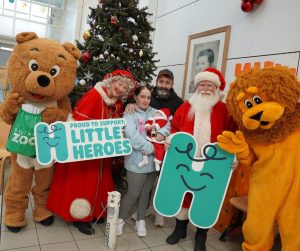In recent years, the impact of the pandemic has meant that many children and young people now need extra support with social and emotional development. Play is the best way that children learn. Play is the way that children can make sense of their experiences, their feelings, and the world around them.
How can you help your child to develop their social, emotional and communication skills?
LEGO bricks can be used at home in many ways, to have fun as a family and support relationships and connection. Whether you are completing a simple guessing game, or working together to build a model, your child will be learning through play. One simple activity that you can try is ‘What’s in the box?’. For this activity, you will need a clear box with a lid and five to ten LEGO bricks of different shapes and sizes. Take turns to choose a brick and describe them to each other. This activity can be adapted to make it more challenging by using a blindfold, or turning back to back, to encourage the use of different words and phrases to describe each other’s bricks. Coming up with funny names can get everyone laughing and having fun together.
EMOTIONAL
Children need to develop the ability to recognise, talk about and understand their own and other’s feelings. Play is a great way to do this, as there are so many emotions that naturally occur during play. Child-led play with parents/carers is hugely important for children’s emotional wellbeing. Many children and adults explain that building LEGO models or sorting LEGO bricks is extremely calming. Some families have found that a quick LEGO-based play activity in the morning helps their child to feel calm. Children also gain a huge sense of accomplishment after building and creating using LEGO bricks, which is important for their confidence and self-efficacy.
COGNITIVE
Strengthening cognitive skills can lead to improvements in memory, attention span, reasoning, visual processing and more. Building a LEGO model is just one way for your child to practice following visual instructions and experience the flow of being fully engaged on a task. The familiar, structured toy can be particularly engaging for children – especially if it is a model they have chosen to build and something that they are interested in making such as a plane, boat, or flowers.
CREATIVITY
Using bricks to build models of your own design, such as a house, imaginary monster or vehicle are all interesting ways to engage your child’s creativity and enhance their ability to think about brick shapes, sizes and colours in alternative ways. Creative thinking fosters positive development by providing opportunities to trial new ideas and find new ways to solve a problem. During a LEGO brick building activity, ask your child questions to encourage them to take the lead such as, ‘What can you make with these bricks?’. Your child might enjoy it if you watch them build and make interested, non-judgemental comments on what they are doing, such as, ‘You’ve put on a blue brick for the pond’.
PHYSICAL
Playing with LEGO bricks is an excellent way for your child to develop their fine motor skills as it requires hand and finger strength to connect and disconnect the bricks. In fact, building with LEGO bricks can improve dexterity, so even the act of sorting out LEGO pieces, and tidying away after an activity, may have positive physical benefits for your child. Going for a walk together, and matching brick colours to the colours you find in nature combines physical activity with the positive mental health benefits of being outdoors.
There is no right or wrong way to play, the most important thing is to have fun together. Uninterrupted one-to-one time from a parent/ carer, following what the child wants to do, is incredibly beneficial. Enjoy spending time together, playing and having fun! If any of the activities
go differently to how you plan, then that’s ok. Follow your child’s lead and I hope that you enjoy spending time together as a family! To learn more about Play Included’s free at home resources, visit: www.playincluded.com/for-home
Author biography
Gina Gómez is a Clinical Psychologist. She is co-author of the LEGO based therapy manual and continues to be involved with academic research as well as clinical practice in the NHS, specialising in autism and child and adolescent mental health.



